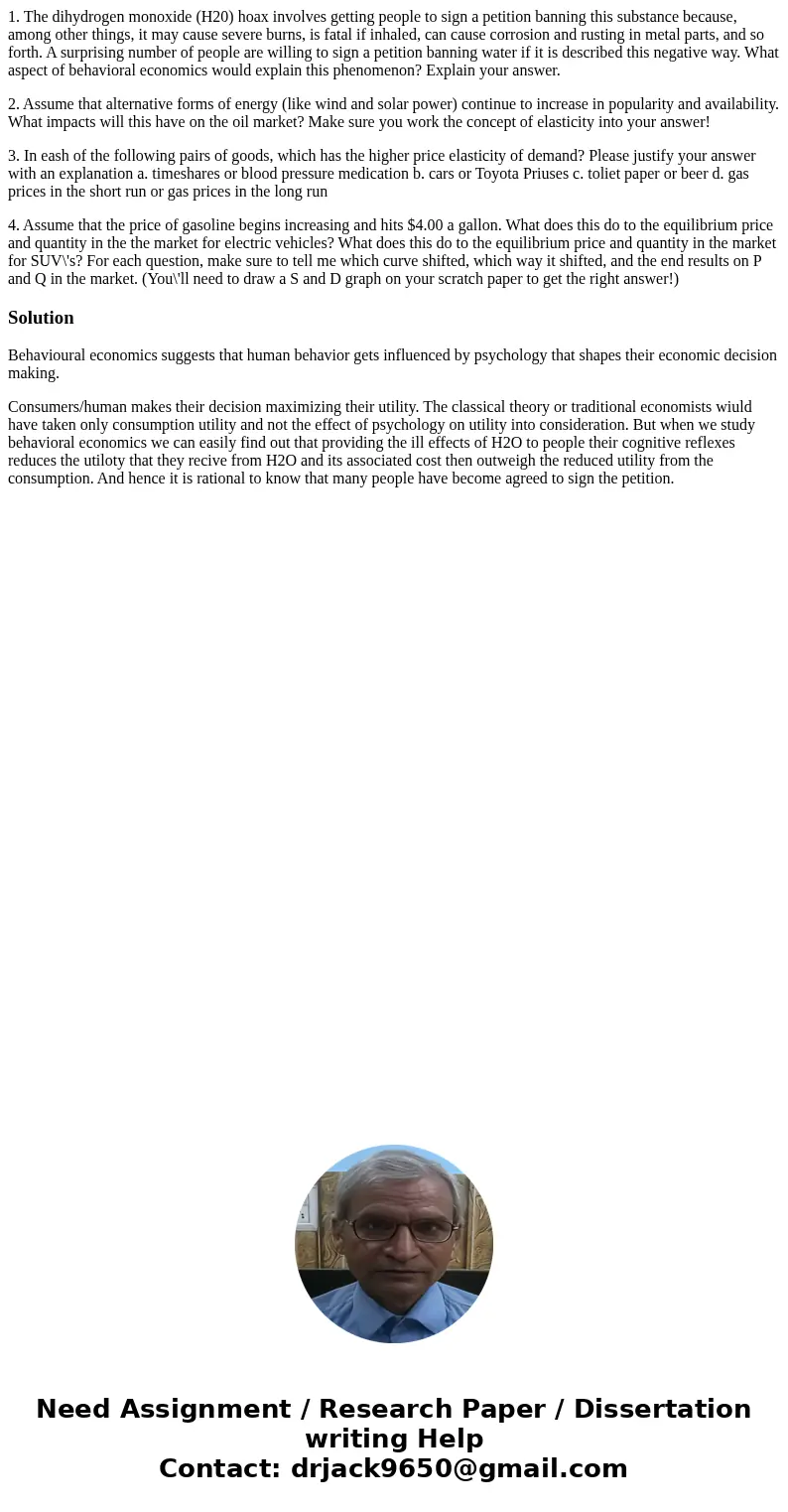1 The dihydrogen monoxide H20 hoax involves getting people t
1. The dihydrogen monoxide (H20) hoax involves getting people to sign a petition banning this substance because, among other things, it may cause severe burns, is fatal if inhaled, can cause corrosion and rusting in metal parts, and so forth. A surprising number of people are willing to sign a petition banning water if it is described this negative way. What aspect of behavioral economics would explain this phenomenon? Explain your answer.
2. Assume that alternative forms of energy (like wind and solar power) continue to increase in popularity and availability. What impacts will this have on the oil market? Make sure you work the concept of elasticity into your answer!
3. In eash of the following pairs of goods, which has the higher price elasticity of demand? Please justify your answer with an explanation a. timeshares or blood pressure medication b. cars or Toyota Priuses c. toliet paper or beer d. gas prices in the short run or gas prices in the long run
4. Assume that the price of gasoline begins increasing and hits $4.00 a gallon. What does this do to the equilibrium price and quantity in the the market for electric vehicles? What does this do to the equilibrium price and quantity in the market for SUV\'s? For each question, make sure to tell me which curve shifted, which way it shifted, and the end results on P and Q in the market. (You\'ll need to draw a S and D graph on your scratch paper to get the right answer!)
Solution
Behavioural economics suggests that human behavior gets influenced by psychology that shapes their economic decision making.
Consumers/human makes their decision maximizing their utility. The classical theory or traditional economists wiuld have taken only consumption utility and not the effect of psychology on utility into consideration. But when we study behavioral economics we can easily find out that providing the ill effects of H2O to people their cognitive reflexes reduces the utiloty that they recive from H2O and its associated cost then outweigh the reduced utility from the consumption. And hence it is rational to know that many people have become agreed to sign the petition.

 Homework Sourse
Homework Sourse